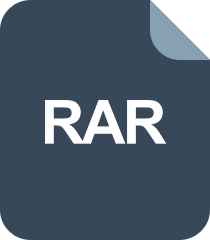OSGEarth Beginner's Guide: Quick Setup Environment and Basic Operations


OSG Beginner's Guide + CookBook
1. Understanding OSGEarth
1.1 What is OSGEarth
OSGEarth is an open-source geographic information system (GIS) framework, developed based on OpenSceneGraph, designed to provide powerful geographic data visualization and interaction capabilities.
1.2 Applications of OSGEarth
OSGEarth is widely used in aerospace, national defense security, urban planning, natural resource management, and other fields, offering high-quality geographic spatial data display and analysis tools to users.
1.3 Features and Advantages of OSGEarth
- Supports various map data sources, including WMS, WMTS, TMS, etc.
- Provides rich map style customization functions.
- Integrates various annotation, measurement, navigation tools.
- Cross-platform support, can run on Windows, Linux, macOS, and other systems.
Through these chapters, readers can have a preliminary understanding of the definition, application areas, features, and advantages of OSGEarth. Next, we will delve into the preparation and environment setup of OSGEarth.
2. Preparation
2.1 Download and Install OSGEarth
In this section, we will introduce how to download and install the OSGEarth software, including obtaining the installation files of the latest version and the installation steps.
- # Download the latest version of OSGEarth package
- wget ***
- ***
- ***
- ***
- ***
- ***
During the installation process, please follow the prompts step by step to ensure the correct installation and configuration of the software.
2.2 Ensure System and Hardware Requirements
OSGEarth has certain requirements for the operating system and hardware configuration. In this section, we will introduce the system and hardware requirements of OSGEarth to help you avoid unnecessary problems during use.
Operating system requirements:
- Supported operating systems: Windows 7/8/10, Linux (CentOS, Ubuntu, etc.), Mac OS X
- Special notes: For different operating systems, you may need to install additional dependency libraries, please refer to the official documentation for instructions.
Hardware configuration requirements:
- CPU: Dual-core processor or above
- Memory: 8GB or more
- Graphics card: Supports OpenGL 4.0 or above
2.3 Prepare Geographic Data
In this section, we will discuss how to prepare the geographic data required by OSGEarth, including terrain data, vector data, etc., so that you can display rich geographic information after setting up the environment.
Steps to prepare geographic data:
- Download terrain data: You can get it from NASA’s DEM data or open data platforms like OpenStreetMap.
- Prepare vector data: Including geographical information data such as roads and buildings.
- Arrange data format: Ensure that the geographic data format meets the requirements of OSGEarth, such as DEM file format, vector data format, etc.
Having a sufficient and rich geographic data will help you display more vivid and detailed geographic information in the OSGEarth environment.
3. Quickly Set Up OSGEarth Environment
In this chapter, we will introduce how to quickly set up an OSGEarth environment, including creating an OSGEarth project, configuring geographic data sources, and setting the perspective and map style.
3.1 Create an OSGEarth Project
To create an OSGEarth project, we first need to ensure that OSGEarth has been correctly downloaded and installed on our system. Then follow these steps:
- osgearth_quick_start --new my_earth_project
- cd my_earth_project
- osgearth_viewer my_earth.earth
With the above commands, we created an OSGEarth project named my_earth_project and opened the Earth using the osgearth_viewer command. Now, you can see a basic Earth view displayed on your screen.
3.2 Configure Geographic Data Sources
To display geographic data, we need to configure data sources. You can add the configuration information of data sources by editing the .earth file. For example:
- <image name="MyMapLayer">
- <url>***</url>
- </image>
The above code snippet shows how to add an image data source MyMapLayer, with the image coming from a URL address.
3.3 Set Perspective and Map Style
You can also set the initial perspective of the Earth or the map style by editing the .earth file. For example, you can adjust the following parameters:
- <model name="LandModel">
- <latitude>40.7128</latitude>
- <longitude>-74.0060</longitude>
- <altitude>10000</altitude>
- </model>
The above code snippet sets the initial perspective of the Earth over New York City, with an altitude of 10000 meters.
After these steps, you have successfully set up a simple OSGEarth environment and configured the basic geographic data sources and map styles. Next, you can continue to explore more features and characteristics of OSGEarth.
4. Basic Operations Guide
4.1 Map Navigation and Control
In OSGEarth, map navigation and control are one of the important basic operations. With the following code example, we can implement map translation, zooming, and rotation navigation functions:
- import osgEarth
- # Create a map controller
- mapControl = osgEarth.MapController()
- # Translate the map
- mapControl.pan(100, 50) # Translate 100 units on the x-axis and 50 units on the y-axis
- # Zoom the map
- mapControl.zoom(2.0) # Zoom the map in twice
- # Rotate the map
- mapControl.rotate(30) # Rotate the map clockwise by 30 degrees
Code Summary: The above code demonstrates how to use the map controller to implement map translation, zooming, and rotation operations.
Result Explanation: After executing the above code, the map will perform the corresponding operations according to the specified parameters, achieving map navigation and control.
4.2 Layer Management
The layer management function in OSGEarth allows users to control the display and hiding of various layers in the map. Here is a simple example:
- import osgEarth
- # Get all layers of the current map
- layers = osgEarth.getLayers()
- # Traverse all layers and set visibility
- for layer in layers:
- if layer.getName() == "roads":
- layer.setVisible(True) # Display the layer named "roads"
- else:
- layer.setVisible(False) # Hide other layers
Code Summary: The above code demonstrates how to use the layer management function to control the display and hiding of specific layers in the map.
Result Explanation: After executing the above code, only the layer named “roads” will be displayed, while other layers will be hidden.
4.3 Using Annotation and Measurement Tools
OSGEarth also provides a rich set of annotation and measurement tools, making it easy for users to add annotation information or perform measurement operations on the map. Here is a simple example:
- import osgEarth
- # Create an annotation tool
- annotationTool = osgEarth.AnnotationTool()
- # Add a point annotation to the map
- annotationTool.addPointAnnotation(30.0, 40.0, "This is a point annotation")
- # Use the measurement tool to measure the distance between two points
- measurementTool = osgEarth.MeasurementTool()
- distance = measurementTool.measureDistance(30.0, 40.0, 35.0, 45.0)
- print("The distance between the two points is:", distance)
Code Summary: The above code demonstrates how to use the annotation tool to add annotations to the map and how to use the measurement tool to measure the distance between two points.
Result Explanation: After executing the above code, a point annotation will appear on the map, and the distance information between the two points will be output.
Through the content of this chapter, readers can quickly get started with the basic operations of OSGEarth, including map navigation and control, layer management, and the use of annotation and measurement tools.
5. Exploring Advanced Features
In this chapter, we will delve into the advanced features of OSGEarth, helping readers further understand the potential and application scenarios of this tool.
5.1 Custom Map Styles
In OSGEarth, you can create unique map styles by customizing layers, textures, symbols, and other elements. The following is a simple example code demonstrating how to customize map styles:
Code Summary: The above code creates a map that includes custom layers and symbols. The custom layer uses a custom image as the base map, while the custom symbols use red circular markers.
Result Explanation: After running the code, you will see the map rendered according to the custom style. Different configurations and materials can create various unique map visual styles.
5.2 Integrating Sensor Data
OSGEarth also supports integrating sensor data, displaying real-time sensor information on the map, and providing users with a more intuitive data presentation. The following is an example of integrating sensor data:
- public void integrateSensorData(Sensor sensor) {
- SensorData data = sensor.getData();
- if(data != null) {
- Point sensorLocation = data.getLocation();
- MapUtils.addSensorMarker(sensorLocation);
- // Update map status based on sensor data
- MapUtils.updateMapBasedOnSensorData(data);
- }
- }
Code Summary: The above code demonstrates how to mark the location of sensor data on the map and update the map status based on sensor information.
Result Explanation: After integrating sensor data, users can intuitively understand the location distribution and real-time data of sensors, providing strong support for related applications.
5.3 Exporting Maps and Data
Finally, we can also easily export maps and related data through OSGEarth, facilitating users to use them on different platforms or in different scenarios. The following is a simple example of exporting a map:
- import OSGEarth
- map = OSGEarth.Map()
- # Add layers, set map styles, etc.
- # Export map to an image file
- map.exportMap("output_map.png")
- # Export data to GeoJSON
- map.exportData("output_data.geojson")
Code Summary: The above code shows how to export a map to an image file and a geographic data file.
Result Explanation: After exporting the map and data, users can apply them to other platforms or perform further data analysis and processing, enhancing the flexibility and usability of the map data.
Through exploring the content of this chapter, readers can further understand and apply the advanced features of OSGEarth, bringing more possibilities and innovations to their projects and applications.
6. Best Practices and Common Problem Solving
In the process of using OSGEarth, following some best practices can help improve efficiency and quality. At the same time, you may encounter some common problems that need to be addressed in a timely manner.
6.1 OSGEarth Best Practices Guide
In the development process, following these best practices can improve the maintainability and scalability of the project:
-
Modular Development: Decompose map functions into independent modules, use object-oriented programming principles to design clear classes and interfaces, and improve code reusability.
-
Proper Use of Caching: Make proper use of OSGEarth’s caching function, avoid frequent data requests, and improve map loading speed.
-
Code Standards and Comments: Follow code standards, good code comments can make it easier for others to understand and maintain your code.
-
Regular Optimization of Map Data: Regularly clean up unnecessary map data and cache files to avoid performance issues caused by overly bulky data.
6.2 Common Problem Solving and Troubleshooting
During the use of OSGEarth, you may encounter some common problems, such as:
-
Slow Map Loading: This could be caused by network issues or excessive data volume, you can adjust the data loading level appropriately or optimize the network connection.
-
Layer Display Issues: Check if the layer configuration is correct, ensure the data source path is correct and error-free.
-
Projection Mismatch: Mismatched map data projection and map view projection can cause display issues, projection transformation is required.
6.3 Community Resources and Further Learning Suggestions
If you encounter a problem that cannot be solved, you can refer to the official documentation of OSGEarth or search community resources for help. In addition, regularly paying attention to the updates and new features of OSGEarth can also help you solve problems quickly and learn more related knowledge.


































